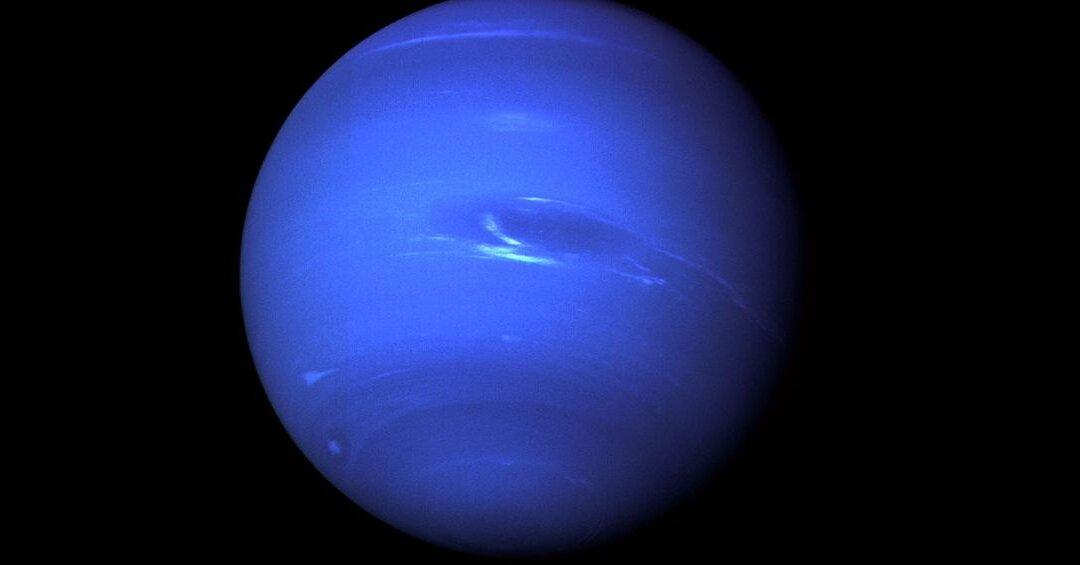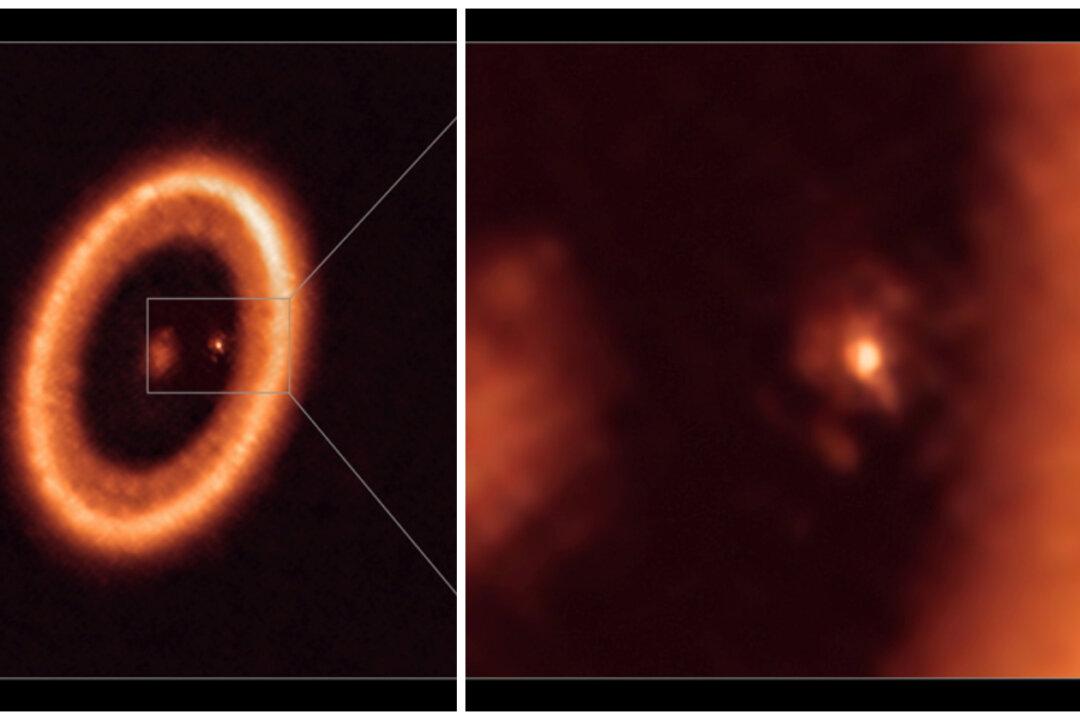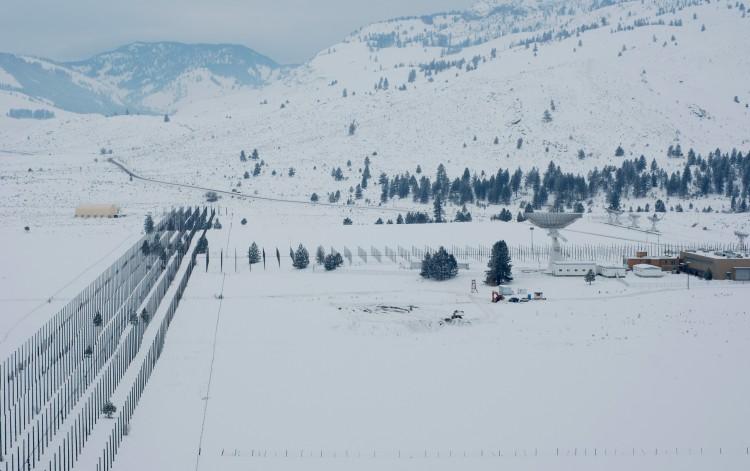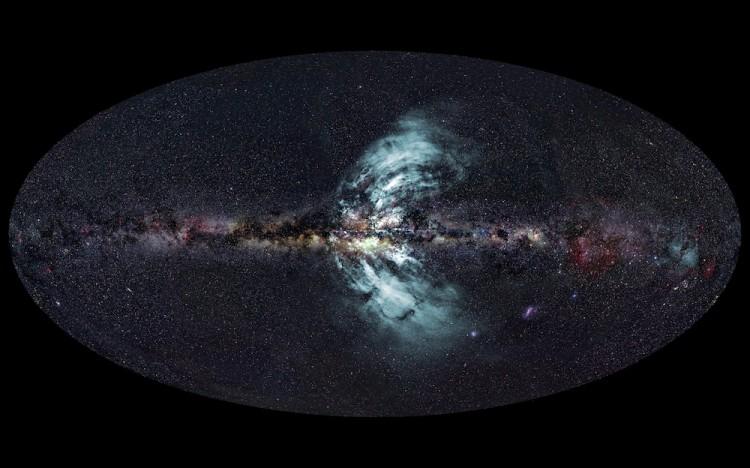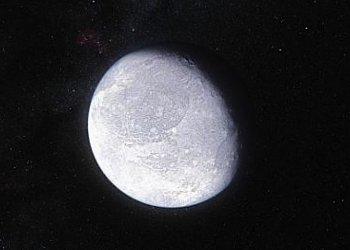Focus
Space Astronomy
Construction Begins on Canada’s Largest Radio Telescope
Construction has started on Canada’s largest radio telescope, the first to be built in more than three decades.
|
Milky Way’s Monster Outflows Help Generate Galactic Magnetic Field
Supersonic geysers of charged particles have been discovered streaming from our galaxy’s center that span about two-thirds of the sky when viewed from Earth.
|
Skynet Program Helps Youth Explore the Universe
A new program called Skynet Junior Scholars will involve middle school students in astronomy with the hopes of fostering interested toward STEM subjects.
|
Space Fireworks to Celebrate Bonfire Night (Photos)
Stellar fireworks display for Guy Fawkes Night, celebrated on Nov. 5.
|
Hubble Sees Disc Surrounding Black Hole
The Hubble Space Telescope (HST) has directly observed a luminous disc of matter being sucked into a supermassive black hole at the heart of a remote galaxy.
|
Brightest, Youngest Millisecond Pulsar Discovered
The brightest ever pulsar has been found inside a globular cluster of galaxies, comprising thousands or perhaps millions of stars held together by mutual gravity, orbiting our own Milky Way galaxy.
|
Gamma Ray Bursts May Enrich Star-Forming Gas
Gamma ray bursts (GRBs), the brightest explosions in the universe, can reveal information about our young universe, and may also fuel star formation.
|
Dust Around Black Holes May Be Smashed Planets
High-speed crashes between asteroids and planets may be responsible for doughnut-shaped dust clouds that veil about 50 percent of known supermassive black holes.
|
Stephan’s Quintet Viewed by Subaru Telescope
A compact group of five galaxies has been snapped in new three-dimensional images to reveal different types of intergalactic star formation.
|
Haunting Halloween Photos From Outer Space
Enjoy this selection of ghostly nebulae and spooky supernovae to celebrate Halloween!
|
The Pacman Nebula Is Growing Teeth (Photo)
This image from the Wide-field Infrared Survey Explorer (WISE) shows the “Pacman” nebula seemingly chomping through space with teeth-like columns of dust and gas.
|
Pluto Finds a Twin in Dwarf Planet Eris
When faraway Eris blocked the light of a star beyond it during a rare occultation event in November 2010, astronomers were able to accurately measure the shape and size of this dwarf planet, which was identified as a large object in our solar system in 2005.
|
Mystery Surrounding Chinese Supernova Solved by NASA
An ancient celestial event observed by Chinese astronomers almost two millennia ago has been explained using NASA’s Spitzer Space Telescope and Wide-field Infrared Survey Explorer (WISE).
|
Dark Matter Enigma Baffles Astronomers
The mysterious nature of dark matter has deepened further with a new study that shows it is uniformly distributed across several hundred light-years in two nearby dwarf galaxies—the Fornax and the Sculptor.
|

|
A Year on Earth: How to Measure a Complete Trip Around the Sun
This video shows how we actually measure a year on Earth. Since our planet’s orbit around the sun does not follow a perfect circle, it does not return to its starting point in space after one year.
|
Oceans of Water Detected in Planet-Forming Disk
A watery haze has been spotted in in a young star’s disk which extends almost 200 times the distance between Earth and the sun, according to new findings published in Science on Oct. 21.
|
Orionid Meteor Shower Starts Peaking Tonight
Stargazers in both the Northern and Southern hemispheres could be treated to a lovely light show over the coming nights as the 2011 Orionid meteor shower enters its most active phase.
|
Construction Begins on Canada’s Largest Radio Telescope
Construction has started on Canada’s largest radio telescope, the first to be built in more than three decades.
|
Milky Way’s Monster Outflows Help Generate Galactic Magnetic Field
Supersonic geysers of charged particles have been discovered streaming from our galaxy’s center that span about two-thirds of the sky when viewed from Earth.
|
Skynet Program Helps Youth Explore the Universe
A new program called Skynet Junior Scholars will involve middle school students in astronomy with the hopes of fostering interested toward STEM subjects.
|
Space Fireworks to Celebrate Bonfire Night (Photos)
Stellar fireworks display for Guy Fawkes Night, celebrated on Nov. 5.
|
Hubble Sees Disc Surrounding Black Hole
The Hubble Space Telescope (HST) has directly observed a luminous disc of matter being sucked into a supermassive black hole at the heart of a remote galaxy.
|
Brightest, Youngest Millisecond Pulsar Discovered
The brightest ever pulsar has been found inside a globular cluster of galaxies, comprising thousands or perhaps millions of stars held together by mutual gravity, orbiting our own Milky Way galaxy.
|
Gamma Ray Bursts May Enrich Star-Forming Gas
Gamma ray bursts (GRBs), the brightest explosions in the universe, can reveal information about our young universe, and may also fuel star formation.
|
Dust Around Black Holes May Be Smashed Planets
High-speed crashes between asteroids and planets may be responsible for doughnut-shaped dust clouds that veil about 50 percent of known supermassive black holes.
|
Stephan’s Quintet Viewed by Subaru Telescope
A compact group of five galaxies has been snapped in new three-dimensional images to reveal different types of intergalactic star formation.
|
Haunting Halloween Photos From Outer Space
Enjoy this selection of ghostly nebulae and spooky supernovae to celebrate Halloween!
|
The Pacman Nebula Is Growing Teeth (Photo)
This image from the Wide-field Infrared Survey Explorer (WISE) shows the “Pacman” nebula seemingly chomping through space with teeth-like columns of dust and gas.
|
Pluto Finds a Twin in Dwarf Planet Eris
When faraway Eris blocked the light of a star beyond it during a rare occultation event in November 2010, astronomers were able to accurately measure the shape and size of this dwarf planet, which was identified as a large object in our solar system in 2005.
|
Mystery Surrounding Chinese Supernova Solved by NASA
An ancient celestial event observed by Chinese astronomers almost two millennia ago has been explained using NASA’s Spitzer Space Telescope and Wide-field Infrared Survey Explorer (WISE).
|
Dark Matter Enigma Baffles Astronomers
The mysterious nature of dark matter has deepened further with a new study that shows it is uniformly distributed across several hundred light-years in two nearby dwarf galaxies—the Fornax and the Sculptor.
|

|
A Year on Earth: How to Measure a Complete Trip Around the Sun
This video shows how we actually measure a year on Earth. Since our planet’s orbit around the sun does not follow a perfect circle, it does not return to its starting point in space after one year.
|
Oceans of Water Detected in Planet-Forming Disk
A watery haze has been spotted in in a young star’s disk which extends almost 200 times the distance between Earth and the sun, according to new findings published in Science on Oct. 21.
|
Orionid Meteor Shower Starts Peaking Tonight
Stargazers in both the Northern and Southern hemispheres could be treated to a lovely light show over the coming nights as the 2011 Orionid meteor shower enters its most active phase.
|
